Sage Barista Touch Review
Sage Barista Touch
A manual coffee machine with smart automatic features
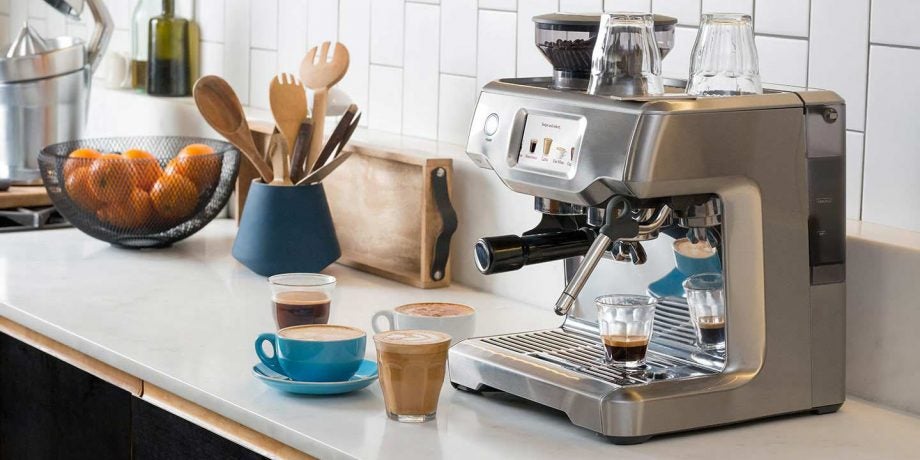
Verdict
Pros
- Compact
- Excellent touchscreen interface
- Very easy to use
Cons
- Expensive
- No pressure gauge
Key Specifications
- Review Price: £1000
- 2-litre reservoir
- Customisable recipes
- Automatic and manual milk frothing
- Touchscreen control
What is the Sage Barista Touch?
If a bean-to-cup machine is a bit too much like cheating, but a fully manual espresso machine feels like a step too far, the Sage Barista Touch could be for you.
Its integrated grinder, fancy touchscreen menu and smart auto-frothing mean you get the benefits of automation in a manual machine that holds your hand at every step.
Related: Best coffee machines
Sage Barista Touch – Design and build
I’ve come to know Sage machines for their build quality and style, and the Barista Touch does nothing to dispel that image. Built from high-quality stainless steel, this is a coffee machine that looks great. Don’t let the images fool you, as the Barista Express is fairly compact at 320 x 240 x 410mm. You’ll have no problem placing this machine on a kitchen counter, as the Barista Express takes up little space.
A 2-litre tank at the rear of the machine provides plenty of water to make a fair number of drinks. You should fit the provided water filter to help keep the inside of the machine clean, replacing when the machine provides notification. The time between filter changes will depend on the water hardness in your area. Thoughtfully, Sage provides a water-testing strip so you can correctly set the water hardness on the machine.
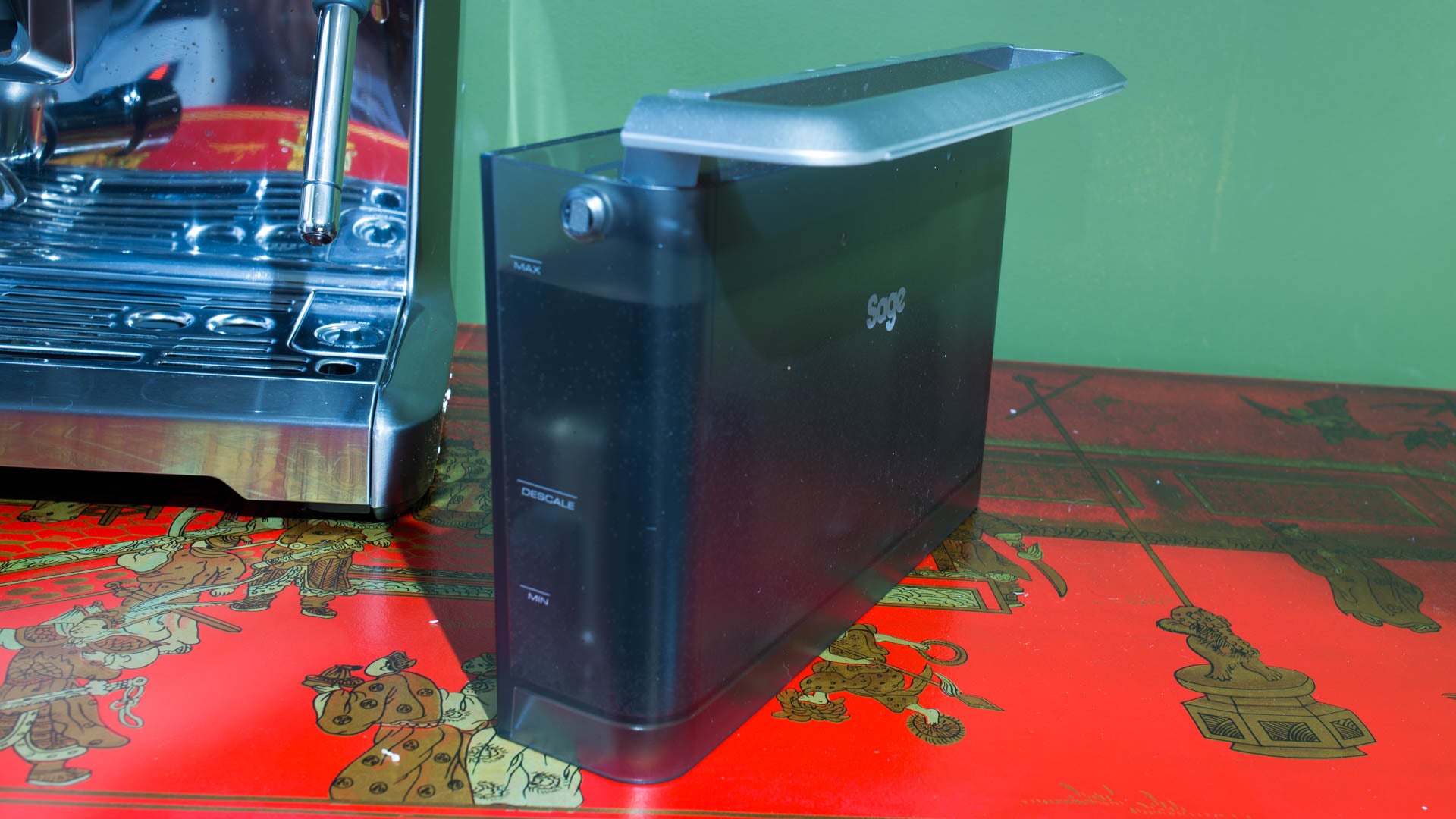
Pull out the drip tray and you’ll discover a handy plastic tool storage tray at the rear of the machine, in which you can store the bundled cleaning disc and cleaning brush.
Sage has used a 54mm filter basket set for the Barista Express. In the box, you get single and double filter baskets in both single-wall and double-wall options. Single-wall filter baskets are used for coffee that you grind yourself; double-wall filter baskets are for pre-ground coffee and are designed to help increase pressure.
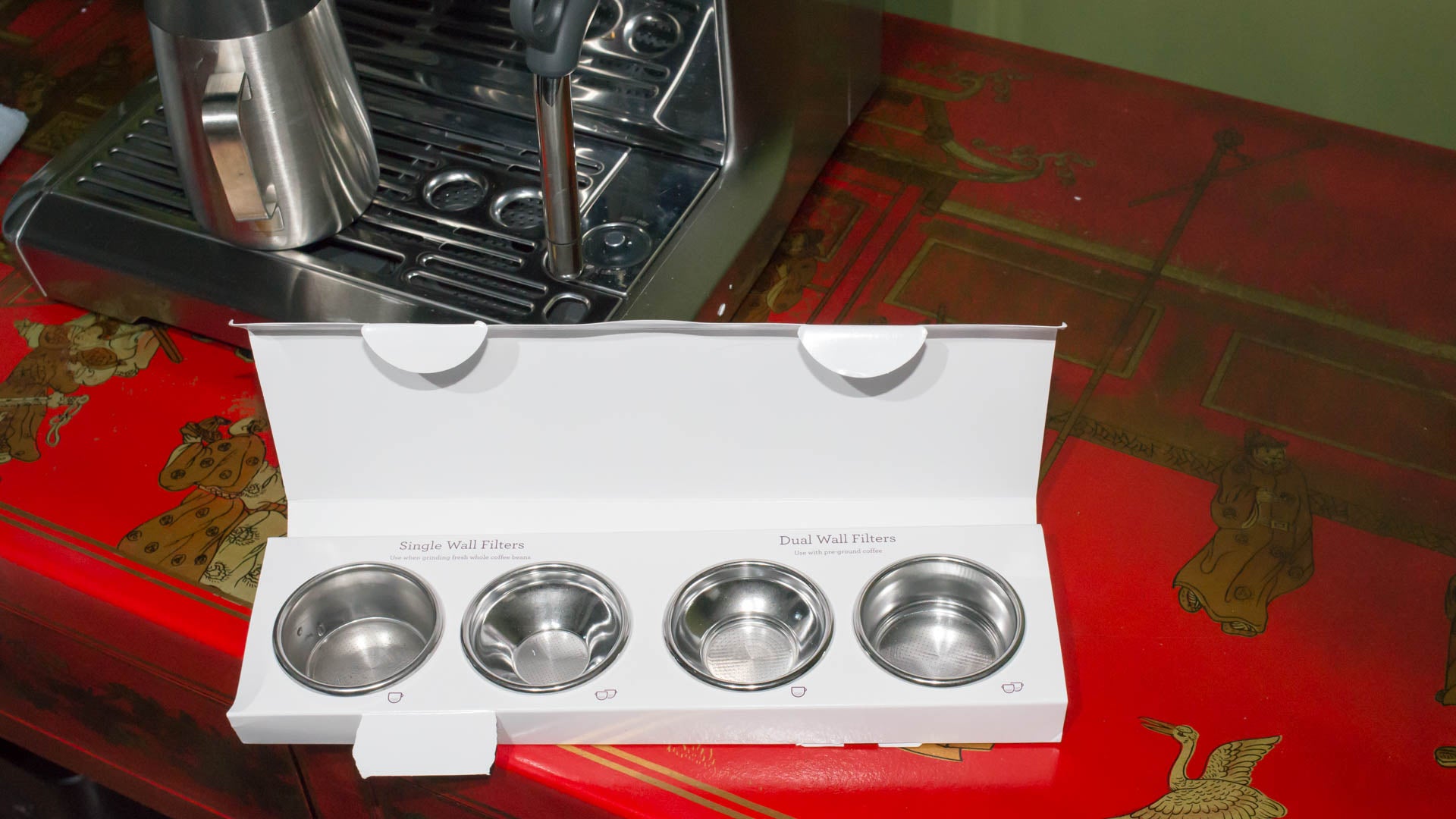
Sage Barista Touch – Features
The front of the machine has a single power button, and everything else is controlled via the large touchscreen display that dominates the front of the machine. The idea is that you pick the recipe you want, then follow the on-screen recipe to put together the right elements.
For example, pick espresso and you can see on-screen how long the grinder is programmed to run for (single or double shot), and the current grind setting. You can override the grind time and use the dial on the side to adjust the grind until you get the perfect mix.
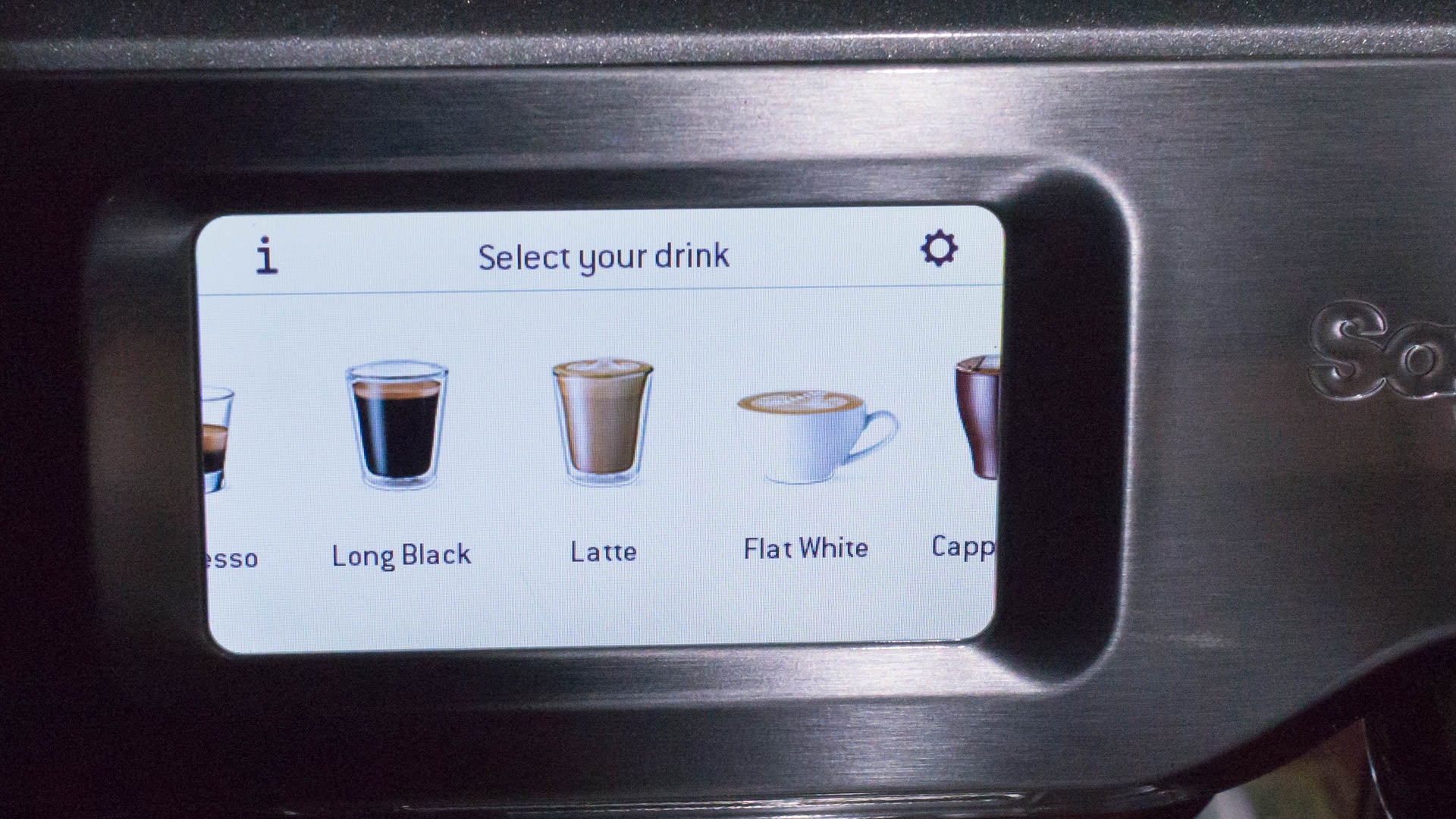
Getting the right amount of coffee into a filter basket can be difficult, but for this Sage provides its Razor tool. It looks a little like a credit card made out of metal. After tamping, you drop the Razor into a filter basket and twist to remove excess coffee.
Personally, I found the Razor useful to get an idea of how much coffee was required. Once I’d worked that out, I adjusted grind time to deliver the right amount and didn’t need to use the tool thereafter. Filling the porter filter is easy, though: just slide the group handle into the mount and click it forwards to kick the grinder into action.
Next, a recipe shows you how long water will be poured, through the coffee grounds. Again, you can adjust this to suit your tastes. There’s a dedicated hot water spout for topping up drinks, with the volume of water fully controllable. And, if you’re making a milky drink, you can adjust both the milk temperature and amount of froth.
For those who want their own style of drink, you can add your own recipes to the Barista Touch, either creating from scratch or by modifying an existing recipe. Certainly, the Barista Touch is exceptionally easy and clear to use, and the responsive touchscreen is great to use.
Sage Barista Touch – Espresso quality
It took me a few goes to get the right combination of grind and tamp pressure using the tamper, which conveniently connects manually to the underside of the coffee machine.
My best results came from using the double-filter basket. The single filter basket with its sloped sides doesn’t give you the same flow of coffee; I found it required a lighter tamp pressure. If you’re looking to impress, stick with making doubles.
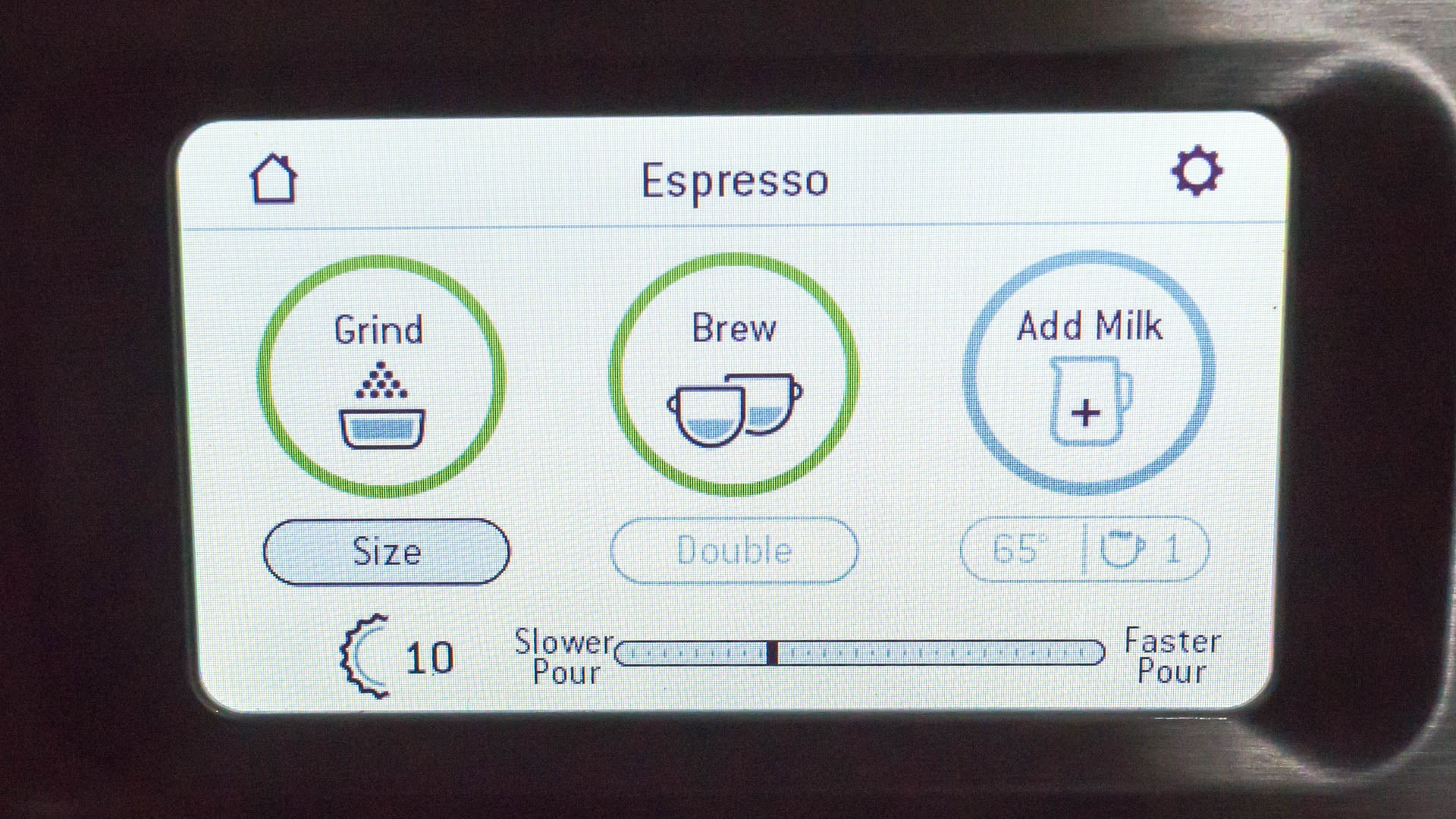
With a fairly tight grind – I used setting 10 – and hefty tamp (Sage recommends between 15 and 20kg of pressure), I hit on the perfect combination. My double shot was programmed to be delivered at a spot-on 30 seconds, producing a rich, thick and oily-looking crema. My one minor complaint with this machine is that there’s no pressure gauge, so it isn’t quite as easy to see if you’ve got things spot on.
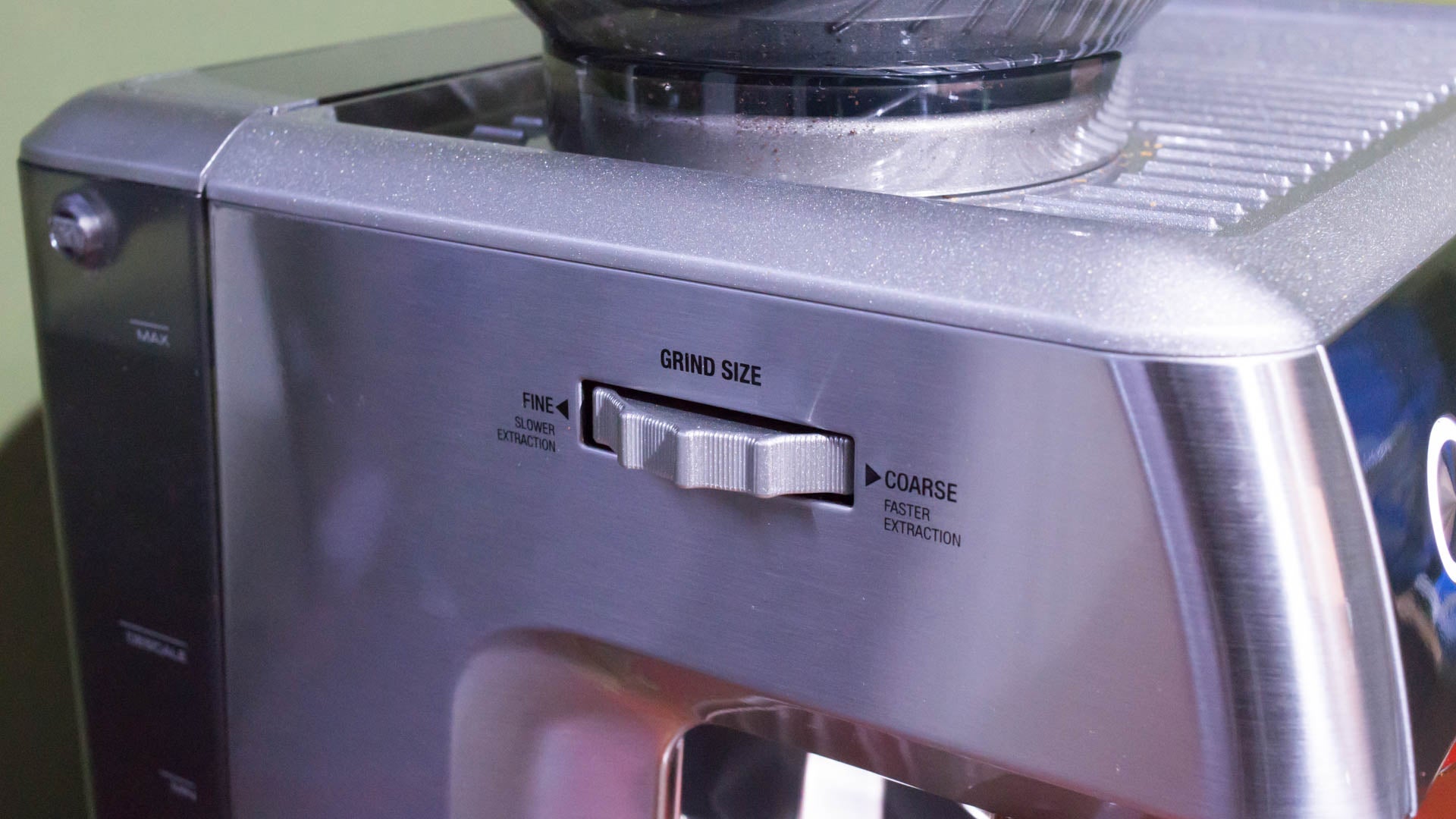
The coffee was delivered at 54ºC, which isn’t warm enough for me. My advice would be to dial up the water temperature using the settings menu – you can get around 60 to 65ºC, which is just about right for Espresso.
Drink quality was very good, with the strong body and pronounced acidity of my test beans coming through. If anything, the espresso shot lost a little of its subtlety; something that more expensive machines with a larger filter basket are capable of delivering.
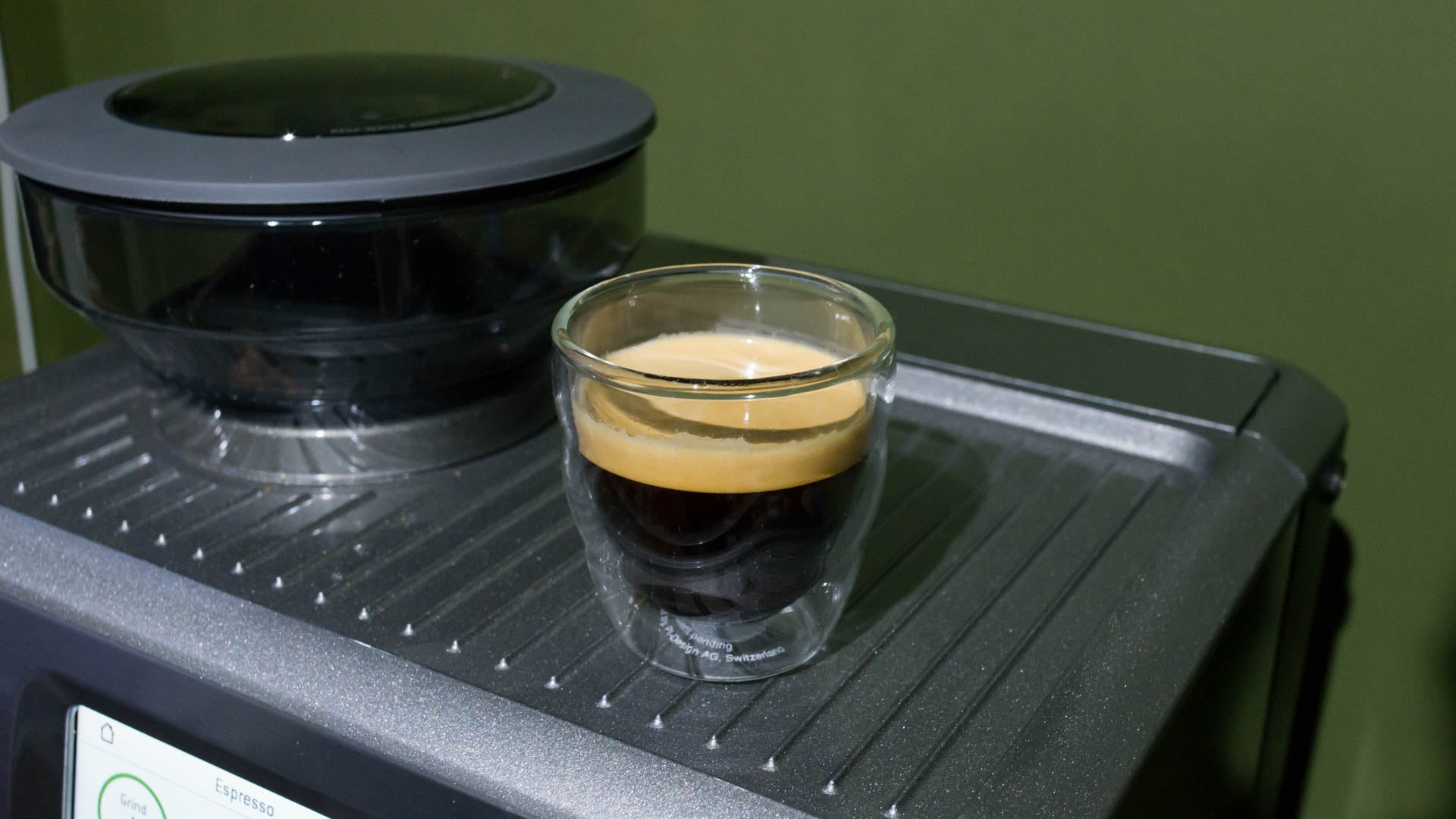
Certainly, there isn’t a lot to complain about – when you get the right tamp, the Barista Touch can deliver a shot of espresso that will outshine all but the very best bean-to-cup machines.
Sage Barista Touch – Milk-based drink quality
It’s milk frothing where the Barista Touch proves itself to be rather clever, as the machine is capable of producing froth automatically. Just fill the provided milk jug between the minimum and maximum lines, drop the spot into the milk and tap the button on the touchscreen. The Barista Touch then automatically warms the milk to the right level, creating the set amount of foam.
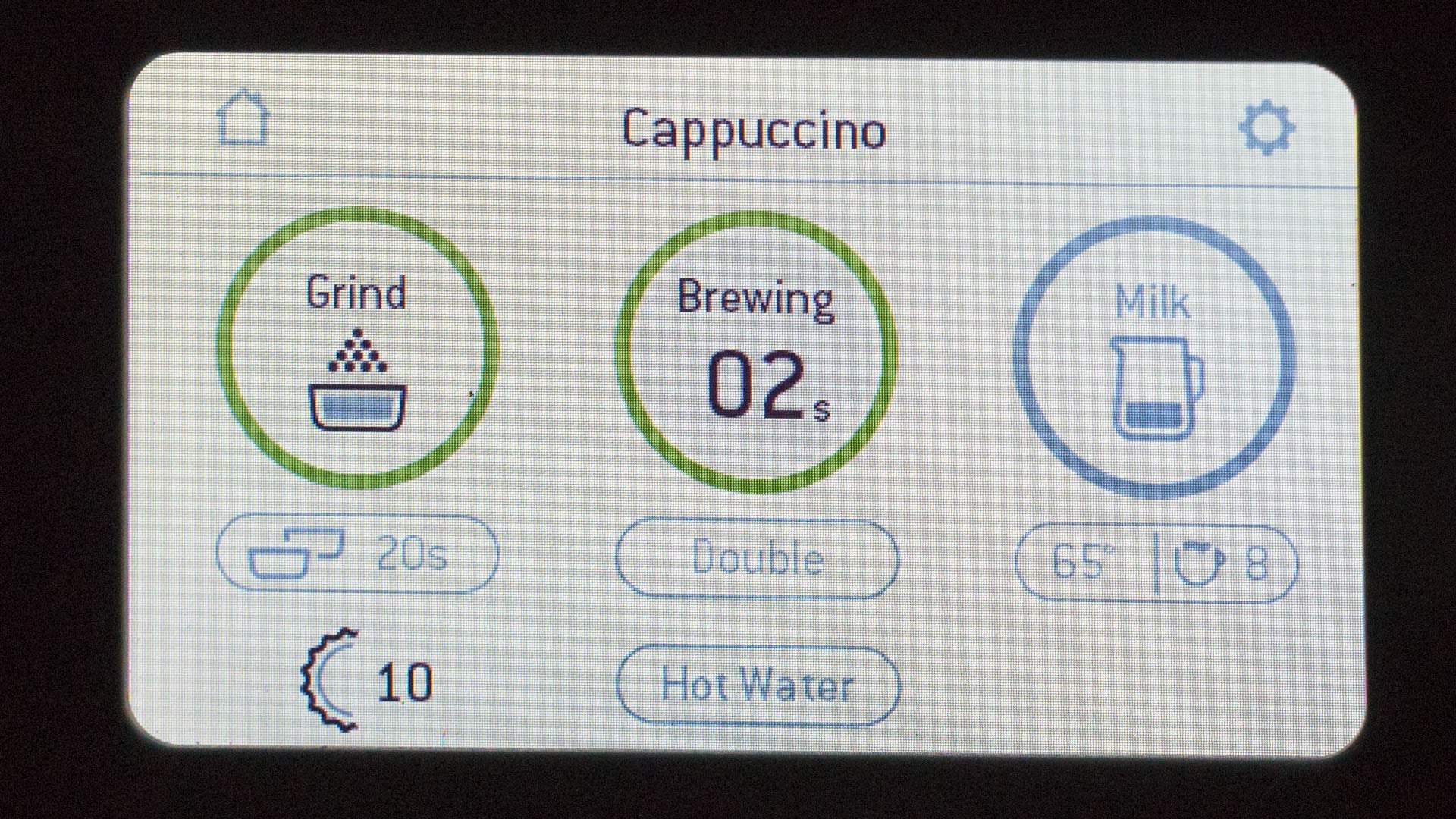
It’s impressive to see it in action. And, once you’re done, you can flip the steamer wand up and remove your milk jug. Drop the wand back into its resting position, and the Barista Touch automatically vents steam, leaving you to give it a quick wipe with a damp cloth to remove any left-over milk.
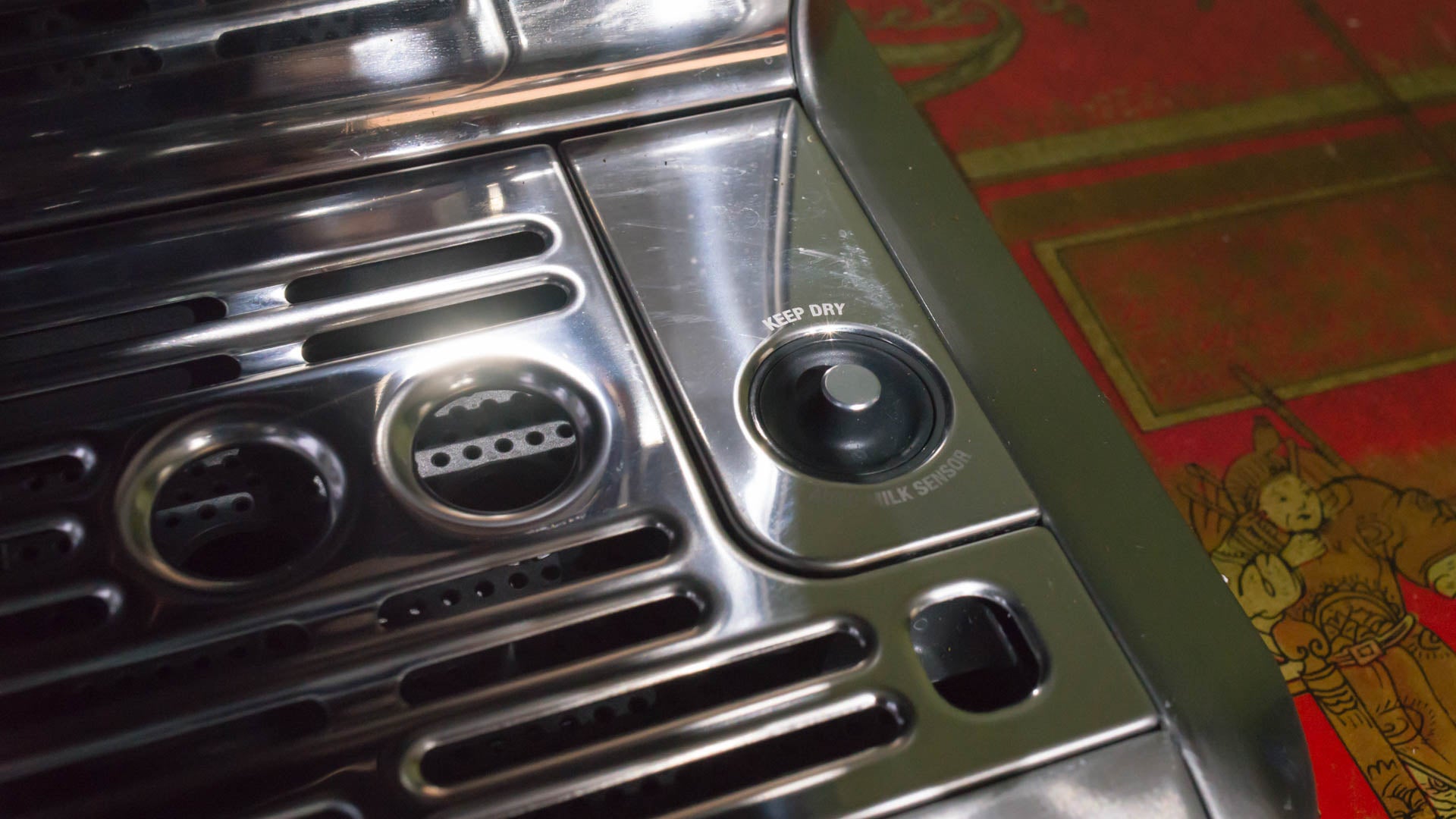
Milk was neatly textured with fine micro-bubbles. Arguably, it could have been a little smoother and little silkier, but for an automatic process the results are good. And, if you want to take manual control, you can. The steamer wand can be operated when it’s lifted out, using the touchscreen controls to turn it on and off. 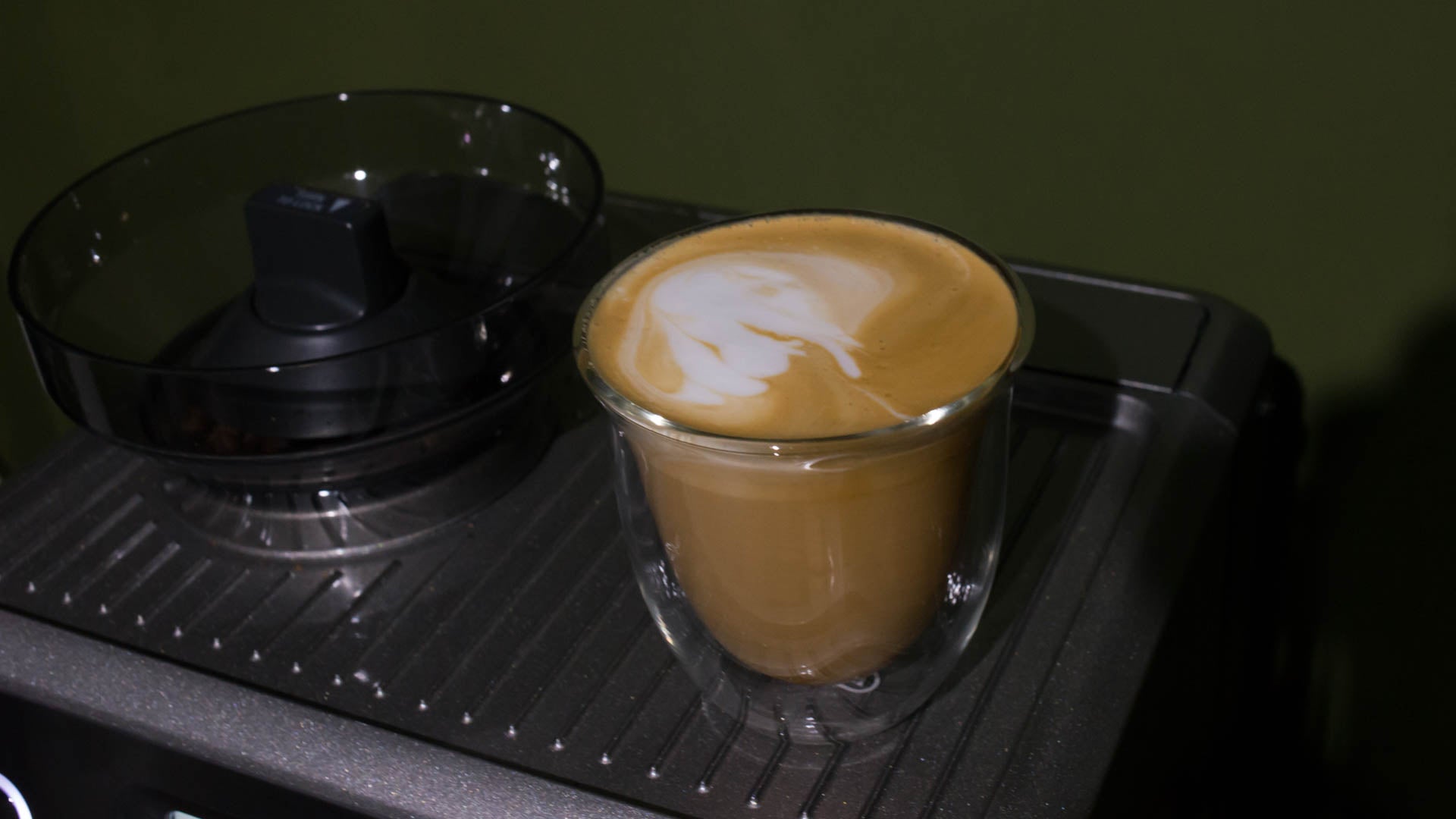
Sage Barista Touch – Maintenance
You’ll be prompted by the Sage Barista Touch when it’s time to descale the machine; the timing is based on the water hardness setting. There’s a dedicated descale cycle available in the settings menu, which takes you through everything you need to do.
The machine will need to be cleaned regularly with a cleaning tablet when prompted. You just drop the tablet into the cleaning disc, which pops into the group head, and run the cleaning cycle thereafter. Sage provides a handy pin tool for unblocking portafilter holes, too.
You’ll want to keep the built-in grinder clean, particularly after using very oily beans. This is best done by running the grinder on empty after each load of beans you grind to clean out any residue. After every three or four loads of beans, it’s wise to use grinder cleaning pellets to keep the inside in tip-top condition.
Why buy the Sage Barista Touch?
With its touchscreen and automated features, the Sage Barista Touch offers up manual control when you want it, but largely takes care of the more fiddly and complicated jobs. You pay a fair chunk for the privilege – the similar Sage Barista Express, which doesn’t have the touchscreen or automated features, is around half the price. And, if you wanted to just go bean-to-cup, the Nivona CafeRomatica 778 is also cheaper.
Still, those who want the best of both worlds will love the Barista Touch.
Verdict
Automatic when you want it, yet has enough manual touches to keep the barista in you happy.


